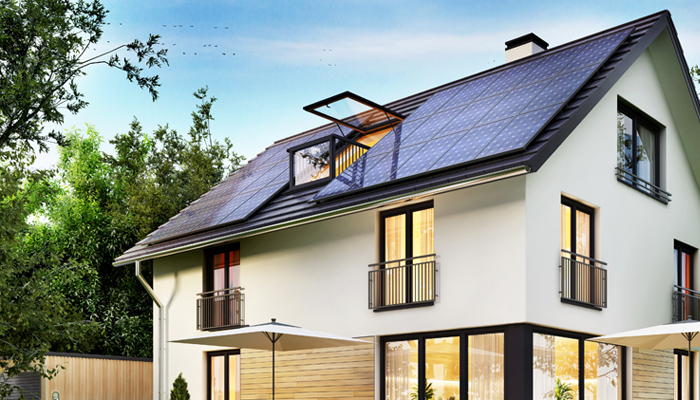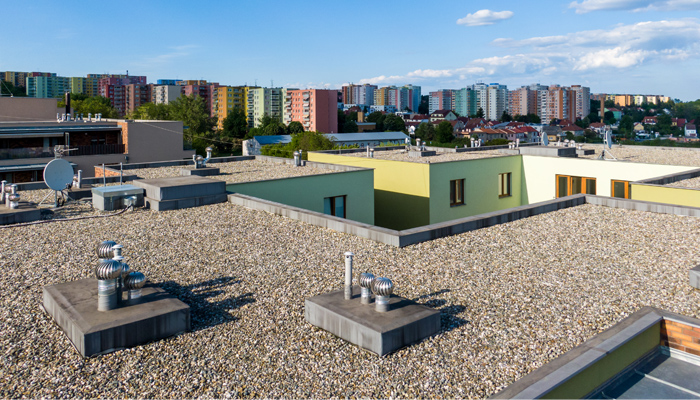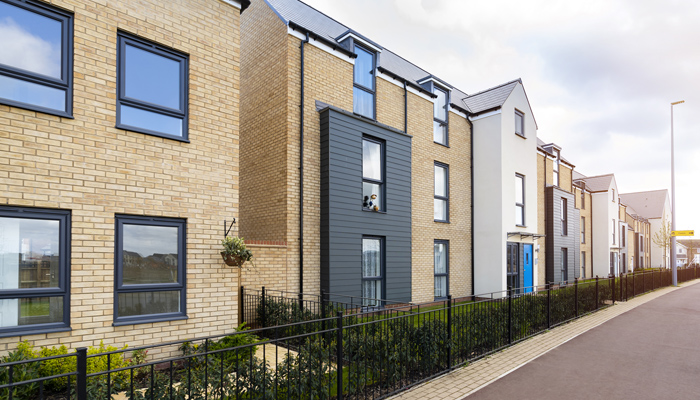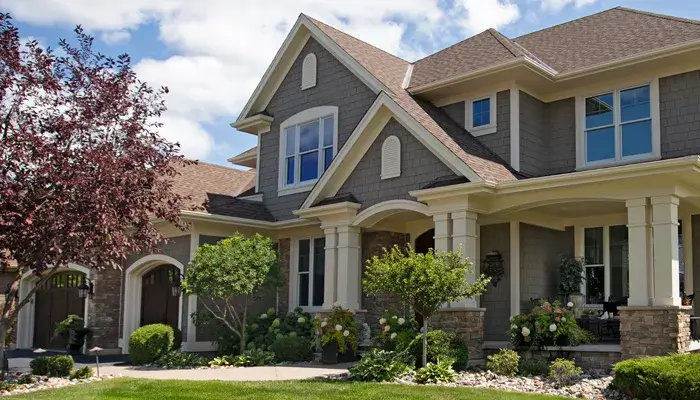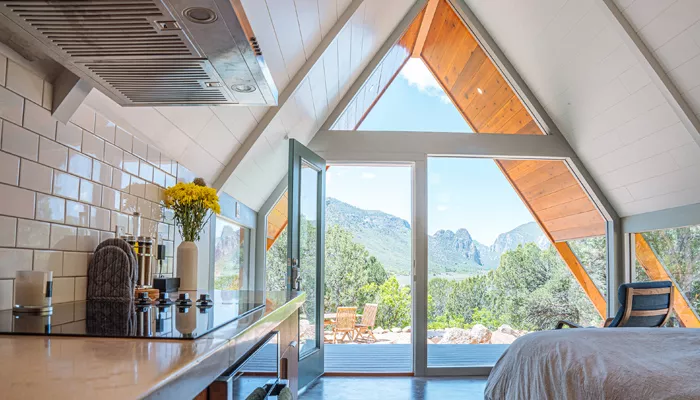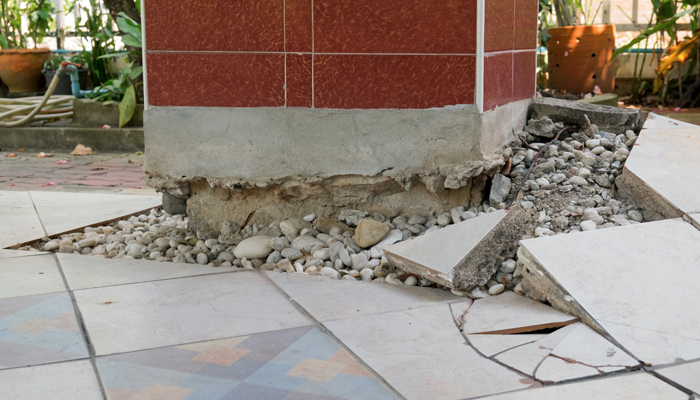Understanding the risks of solar panel rooftop systems
Understanding the risks of solar panel (PV) rooftop systems
We spoke to Paul Farmer, Head of Technical at RiskSTOP Surveys Ltd, about the emerging risks associated with roof mounted solar panel systems.
As of the end of May 2024, there are approximately 1,580,113 solar panel (PV) systems in the UK.1
With the growing popularity of solar panels, our sister-company RiskSTOP highlights why we need to assess the property (and liability) exposures presented by roof mounted photovoltaic (PV) systems.
The article aims to explain how roof mounted PV systems influence the fire dynamics of a roof, what hazards they present, how best to control them and additionally provide information that is helpful in assisting the underwriting process.
Currently there is no UK legislation on the UK solar industry. As it is unregulated, there is no UK legislation associated with the fire risks or the potential for loss of life and material assets. Therefore, there is no control over the competency of designers and installers, nor the quality of components. The onus is on the insurance industry to address and best control the risks presented by PV systems.
How much of a risk do solar panels present?
In 2021, a large solar-powered warehouse in the Netherlands fell victim to a major fire. The fire took hold of the entire roof and produced thick black smoke indicating there was combustible plastic materials involved.2
Unfortunately, sharp PV module fragments were found for several kilometres around the building and needed specialist contractors to come in to remove them.
Additionally, this location was an agricultural area with livestock and the particles released by the blaze posed a particular threat to the animals themselves.
This highlights both the property and liability exposures that solar panels present.

What do we need to assess when installing solar panel (PV) rooftop systems?
Firstly, we need to assess the roof construction and access where the PV system will be placed. Some questions to consider include:
- How old is the roof?
- What is the roof constructed of?
- Are there any roof lights? If yes, is there sufficient distance between panels and roof lights?
- Are there smoke vents? If yes, can they still fully open?
- Is there safe and secure access to the roof?
- Are there safe walkways to enable maintenance to the roof, PV system and guttering?
What do we need to think about regarding the mounting system when installing solar panel (PV) rooftop systems?
Photovoltaic mounting systems are used to attach the PV system to the roof itself. It can also be called solar module racking. Please note, it is essential that the mounting system is regularly checked to make sure it hasn’t moved.
- How are the panel modules fixed to the roof?
- Are they anchored or ballasted?
- If anchored, have all penetrations been appropriately fire-stopped? Does the roof have composite panels - have those been appropriately fire-stopped?
- If ballasted, is there sufficient ballast to weigh the panels?
Other considerations when installing solar panel (PV) rooftop systems?
- How are the cables run?
- Through the roof? If yes, have all penetrations been appropriately fire-stopped?
- Along the roof and down the side of the building? In cable trays?
- Is there appropriate cable management in place?
- Is the system earthed?
- Where are the inverters located?
- Are they on the roof?
- Are they at ground level, easily accessible and within a fire compartmented room?
- Are they protected against impact damage?
- Is there a DC isolation switch (aka fireman’s switch) that is easily accessible? Some insurers now request DC isolation switches to be provided as risk improvements.
- Is there a battery energy storage system (BESS)? If yes, what is the capacity of the batteries and where are they located?
The importance of operation and maintenance (O&M) solar panel (PV) rooftop systems
There is a myth that all PV systems are virtually maintenance free, however nothing could be further from the truth. It is important to remember that these systems are electrical installations and for PV installations atop all bar single residential dwellings, there are regulations that must be followed, specifically BS 7671 Requirements for Electrical Installations (aka The IET Wiring Regulations).
Solar Energy UK has provided a best practice guidance document which clearly states that the capacity of the system will clearly determine the frequency of maintenance checks. The maximum frequency is 12 months however this can be as frequent as quarterly if you have a system with a significant capacity.
This is why it is important to understand that roof mounted solar panel systems are not maintenance free, and owners of the buildings have a responsibility to protect anyone from any danger (including risk of injury, death, damage to property or assets etc).
Benefits of robust O&M:
- Increases energy generation
- Reduces maintenance costs
- Improved safety
- Reduced potential of significant losses
- Warranty compliance
- Reduces breakdown frequency
Ensure that you receive an O&M manual from your installer. Without one it is very difficult to:
- Know how to monitor the system performance.
- Know how to safely operate and safely shutdown the system.
- Have a preventative or reactive maintenance regime.
Which are all key elements of minimising the potential of a significant loss related to the PV system.
Are there any weather-related risks for solar panel (PV) rooftop systems?
The roof mounted PV installation may become damaged from weather related conditions such as heat, hail, lightning, snow and wind. Inspection of the roof and installation should be undertaken immediately following such events to identify and assess any damage and required rectification work.
Examples could include:
- Accumulation of snow, rainwater and ice creating additional roof loading.
- Ice formed on the panels or connections and any other ice damage.
- Thermal movement of panels/fixings caused by excessive heatwaves.
- Loose panels or module mountings/fixings (including ballast) following high gusts of wind.
- Cracked/broken panel glazing following hail event. RiskSTOP have noticed that this is the most common cause of damage to the panels.
- Damage to system components following lightning strike(s).
- Overheating of electrical control system and inverters during high ambient temperature events (heatwave) can cause component failure.
What might underwriters consider when providing cover for a building with solar panel systems?
An insurer might want a broker or the client to provide information on the following to advise what the additional exposures are.
- Verification that the roof has the structural strength for the additional weight (PV system/wind/snow etc).
- The capacity of the system (if known).
- Is there a Battery Energy Storage System (BESS).
- If yes, what is the capacity of the batteries, is the location appropriate and whether there is any automatic fixed fire protection.
- Were the designers/installers accredited/certified by a recognised body?
- Has the system impacted on construction rating of the roof?
- If anchored to the roof frame, is there appropriate fire-stopping?
- Any visible evidence of movement of the PV panel strings.
- Has the installer provided the end user with: -
- Training on the operation, monitoring and maintenance requirements.
- An O&M manual.
- Is there evidence of an appropriate preventative and reactive maintenance regime in place.
- Location of the inverters and required control in place.
- Is there an easily accessible and lockable DC isolation switch?
- Appropriate risk improvements to guide the end user and safeguard their investment.
If you have had roof mounted solar panels installed on your commercial property, make sure you inform your insurer or broker to ensure your insurance is up to date. For more information on the risks associated with roof mounted solar panels and best practice, please reach out to your usual Towergate adviser.
Date: July 07, 2024
Category: Home and Property





